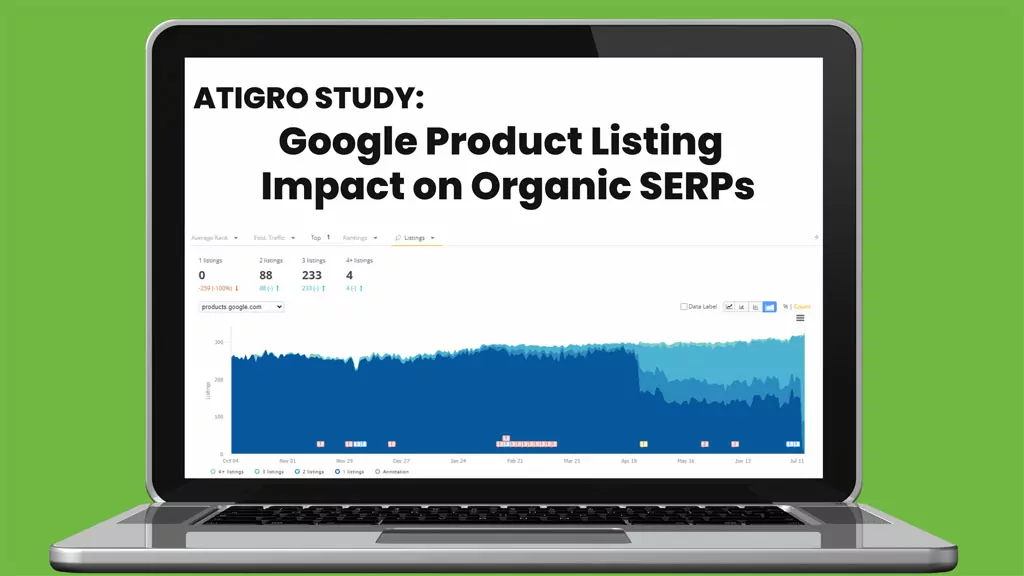Product Listing Impact on SERPs
Trend Data
Building a Strategy
Google has been introducing new rich results and rankings for ecommerce SERPs. This study looks at data over the past year and aims to show the trend of various product listings and how that has impacted traditional organic results, as well as how informational URLs (buying guides, product reviews, how-to content) have trended on SERPs.
Atigro Study Approach: All data is analyzed using the seoClarity platform with search insights tools. Analysis was conducted on mobile results between June 1, 2021, through July 8, 2022.
Google Product Listing Impact on SERPs
Product listings in Google’s organic search results have been a long time in the making and are one of Google’s next moves in an attempt to take over a bit of the online shopping marketplace share that Amazon currently dominates. These product listings show up as a block of products (normally 2×2 on iOS mobile), many times stacked on top of each other. An extreme case of product listing stacking was reported by Dan Shure via Twitter noticing an extreme sixteen products in a row! Each listing features one product with a large picture, description, brand name, and review aggregate if available (Google is testing many new small details to these listings weekly).

Products have also begun to show up more and more in the form of “popular products” carousels. These types of product listings include product name, brand name, price, ratings, and “highlights” that pick out key parts of reviews. This rich result is formatted with a left-and-right scroll feature. If you tap “see more” at the end of the scroll, it sends you straight to Google Shopping.
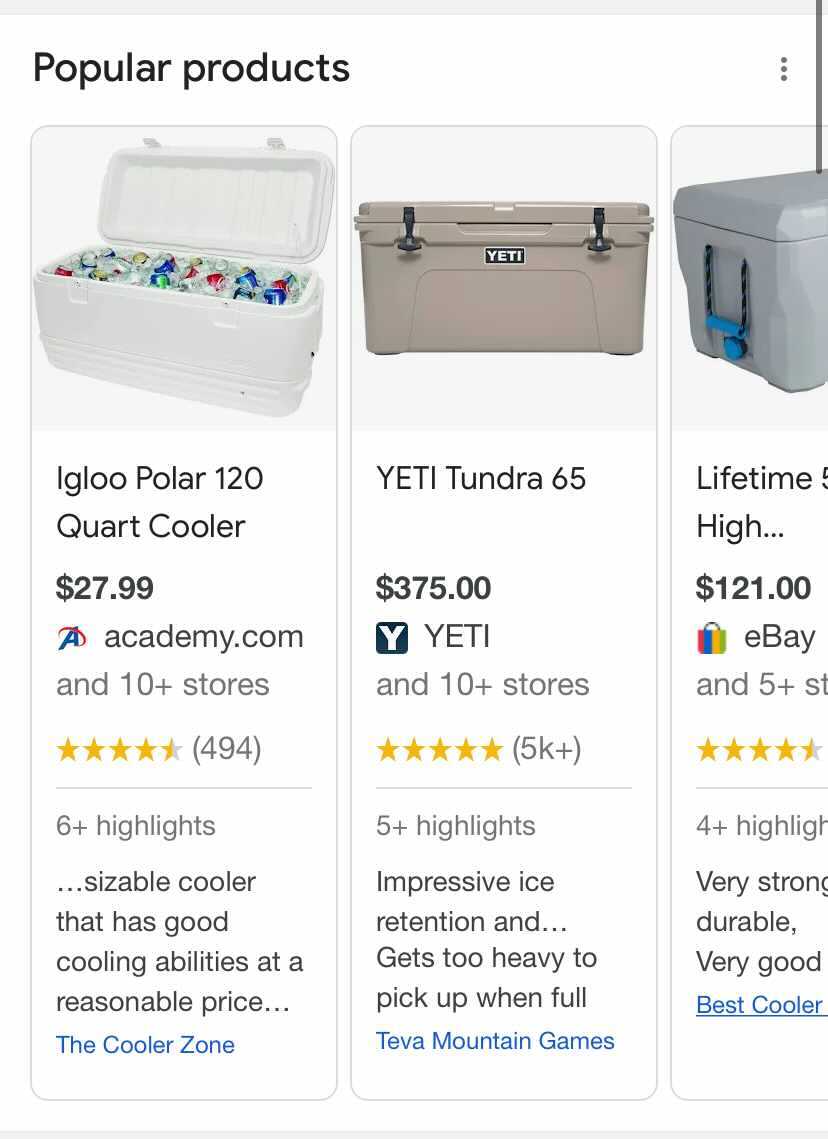
Google pulls in the information for these rich results from Google Merchant Center, making optimizing for them fall under the realm of Google Shopping. For businesses that have seen SEO success on their ecommerce websites for years, this presents a unique challenge. The first issue is it forces them to establish and optimize their Google Merchant Centers, which like Google Ads or Google Business Profile, requires an entirely different skill set than traditional optimization for search engines.
A bigger issue is the space these listings take up on the SERP. For SERPs with these rich results, product listings (especially when stacked and coupled with other rich results) can push traditional organic links down a great deal.
In the graphic below, we compare the SERP for “pressure tanks” on March 3rd, 2022, and July 8th, 2022. In March, we see that Lowes and Home Depot hold the #1 and #2 traditional organic spots but are separated by a popular products carousel and a people-also-ask rich result, making the distance between #1 and #2 considerable. Fast forward to July, and we see that the top of the SERP has changed to the traditional blue link for Lowes sandwiched by two product listings, and Home Depot still holding the #2 spot. With these changes, Lowes’ traditional blue link is now barely visible above the fold, and Home Depot now requires close to two full scrolls to be seen.
Even though Lowes and Home Depot also have featured products in the product listings, the space originally occupied by them solely is now shared with another brand on the SERP. In addition, clicking on the product listing immediately takes users into the Google shopping interface and features other brands with the same product at cheaper prices. Certainly proving less powerful than the traditional blue link position.
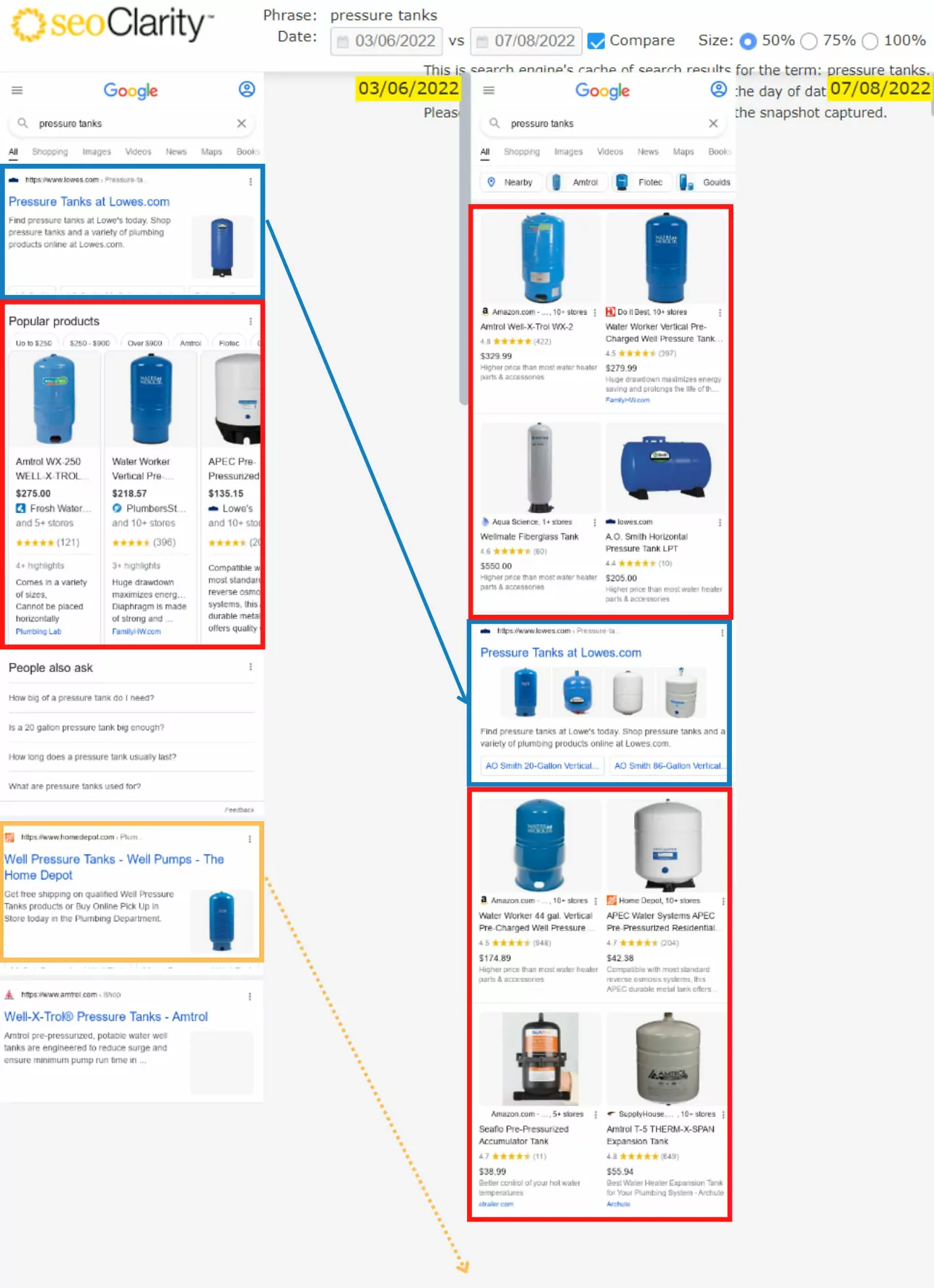
Trend Data
These transactional SERPs shuffle around and change day-to-day, making putting your finger on these changes and analyzing how they impact revenue difficult. That being said, we can look at trends to analyze where we stand on average, and what strategy ecommerce sites should put in place going forward.
Product Listing Trends
First, we’re going to look at how these product listings/product carousels have changed in average rank over the last year. Note that the domain tracked here (products.google.com) could be either product listings or popular product carousels. These trends will follow the top-ranking product listing.
We analyze 4 ecommerce search terms from different industries:
- Hockey Skates
- Door Hinges
- Screen Protector
- Ground Coffee
With our first term, “hockey skates”, we see that the monthly average rank for products.google.com in 2021 fluctuated between 3 and 6. Since 2022, there has been a steady increase in the rank of product listings, and in June it’s sitting in the 2nd spot.
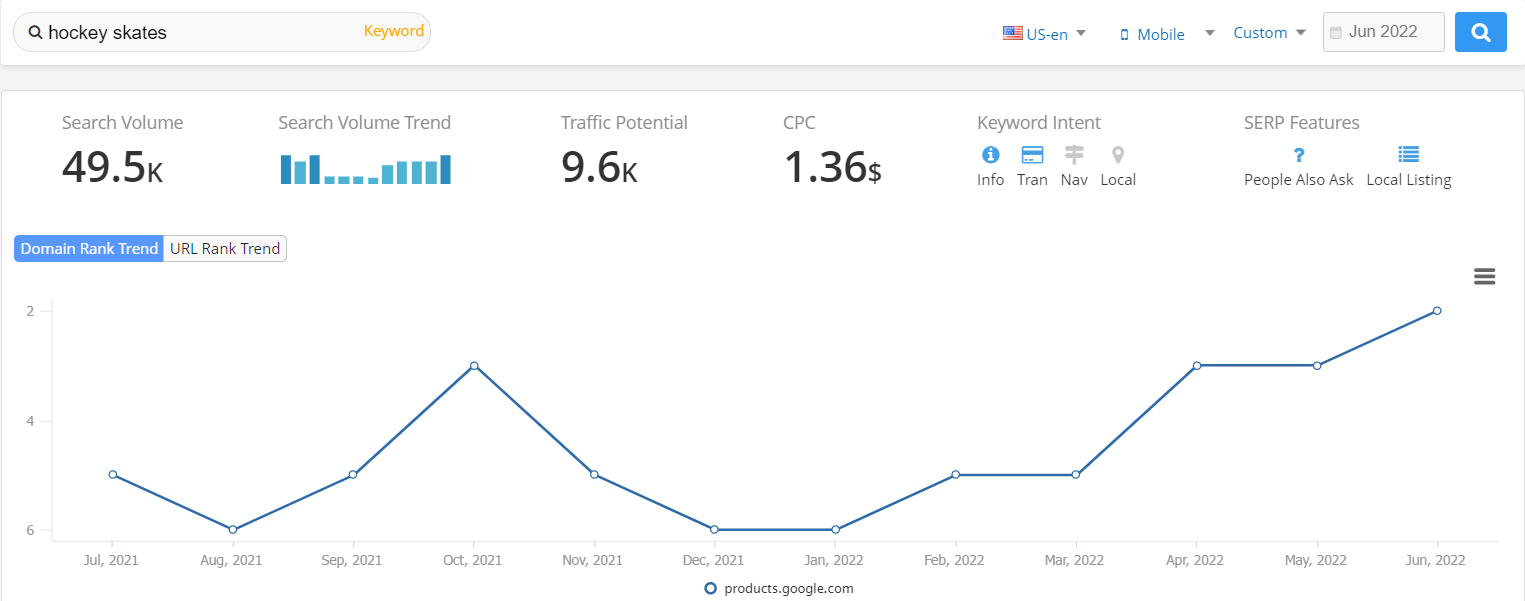
The rich result on the SERP for “door hinges,” shows that products.google.com has held that 2nd spot since January of 2022. This is quite a jump from 2021 when it was between 4 and 6
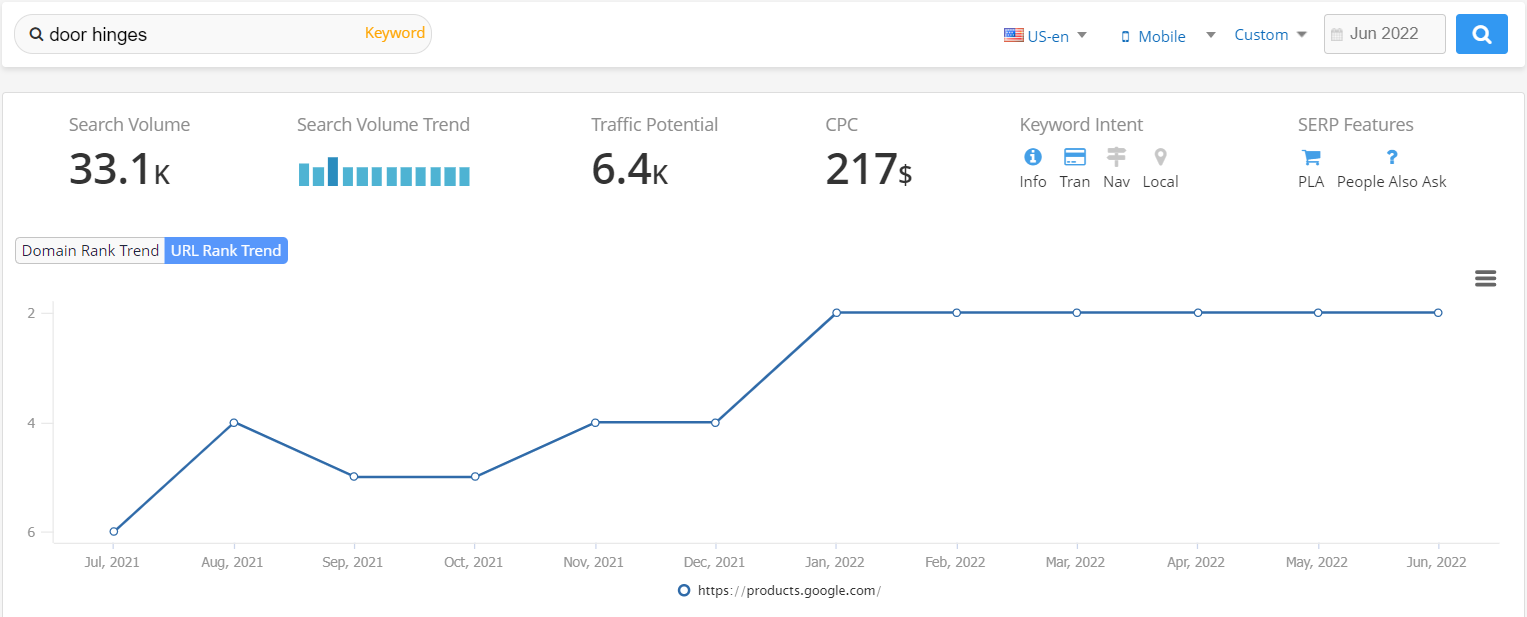
The term “screen protector” has the slowest upward trend of the ones we looked at, but in the last 6 months has bounced between #3 and #4. This is much higher on average than 2021.
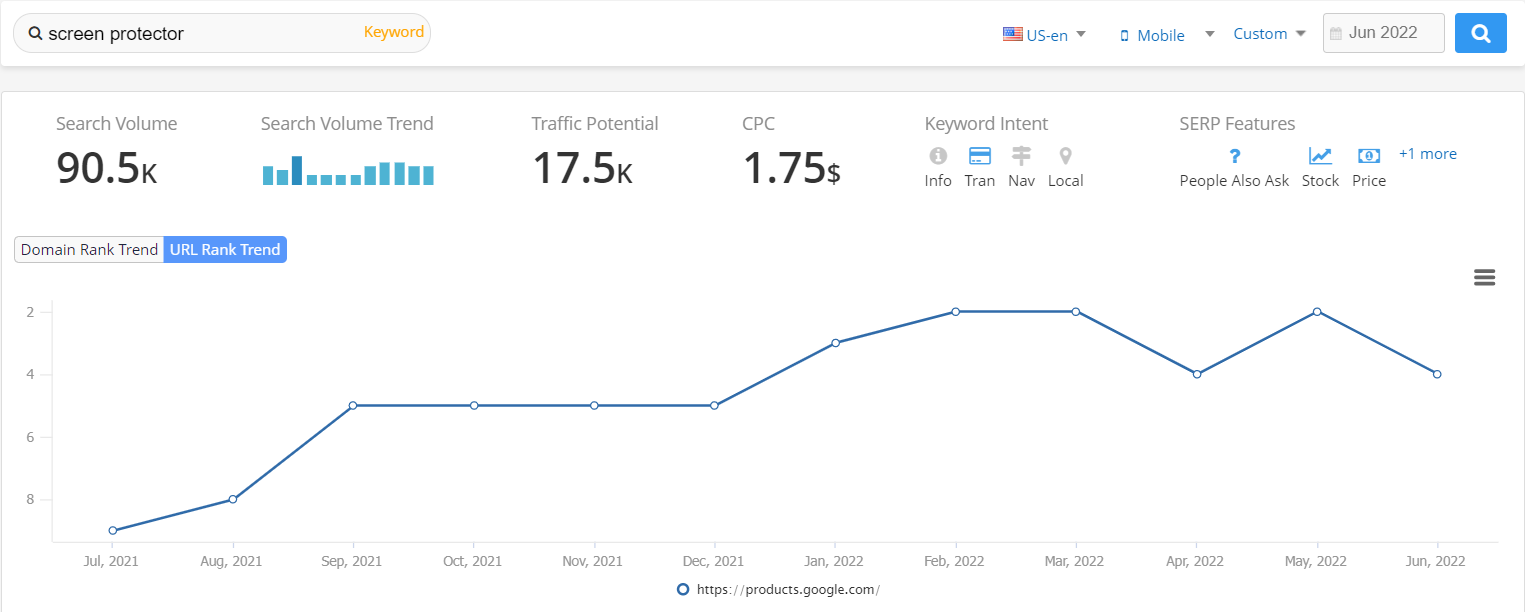
Our last search term “ground coffee” shows another dramatic increase in late 2021 and an average position of #1 or #2 in 2022
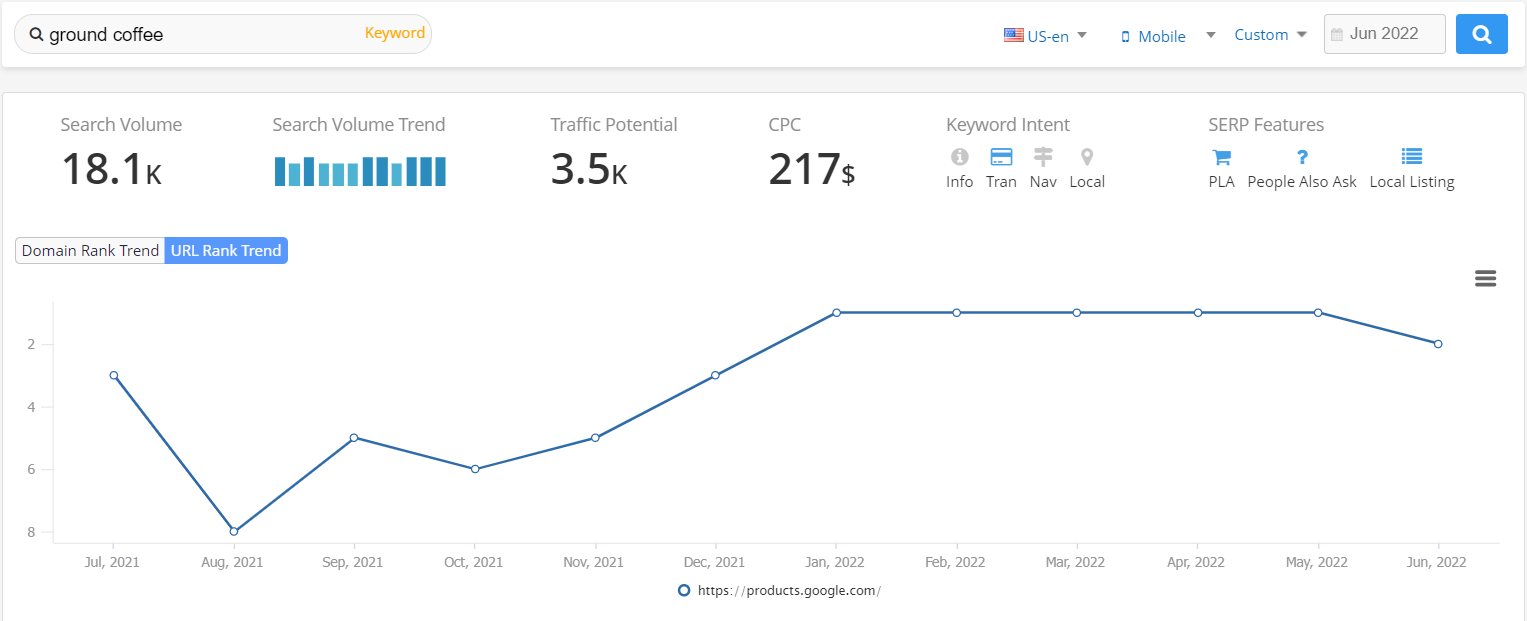
There is an obvious increase in product listing rank on ecommerce SERPs starting around January 2022. And this doesn’t stop at just rank but also continues on to the number of listings on the SERP. Using seoClarity’s rank intelligence to look at the number of listings on a single SERP, we can see in 2021 most keywords just contained one listing (dark blue area). In 2022 we see a dramatic increase in SERPs with 2, 3, and even 4 listings on one SERP! As of July, the majority of SERPs for this keyword universe in the home goods industry have 3 product listings on them.
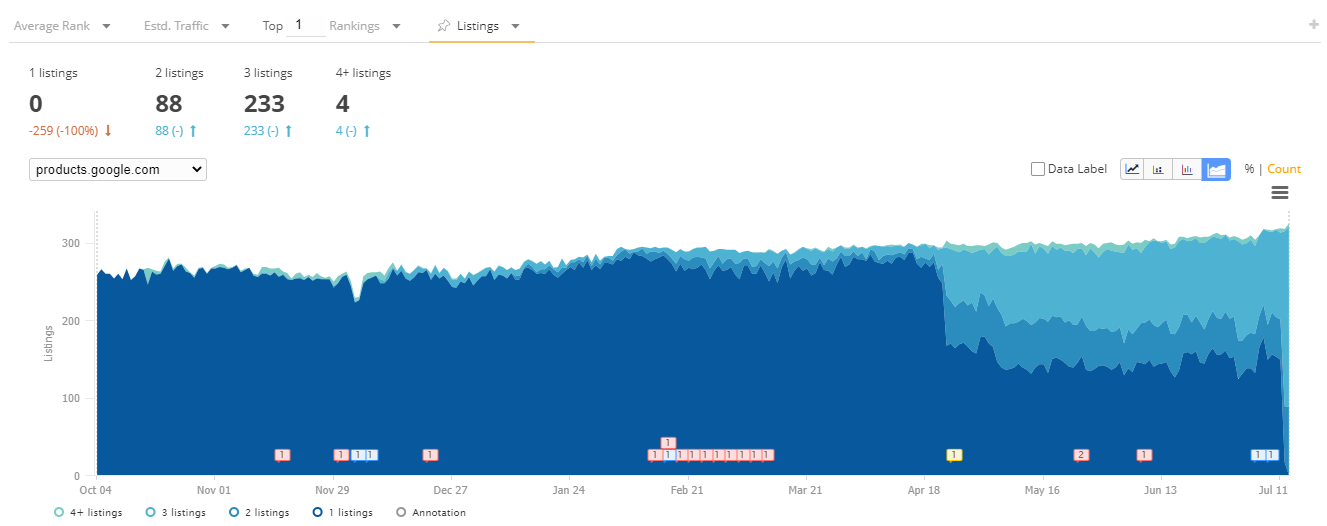
Organic “Blue Links” to Product URLs
Next, we wanted to look at traditional “blue link” organic results that land the searcher on a product or product category page (as opposed to a blog or buying guide page). With the crowded space at the top of ecommerce SERPs and the increase in Google’s own product listing rank, we would expect to see plenty of movement in these rankings. Here we look at the yearly trend of the top 5 (as of July 2022) product or category URLs. On these charts, you will also see the Google product listings previously mentioned.
“Hockey Skates” shows the same organic traditional blue links that have been battling for the top spots since last year. After taking a dive in late 2021, Google product listings (the orange trend line) have risen to the second organic spot in July 2021.
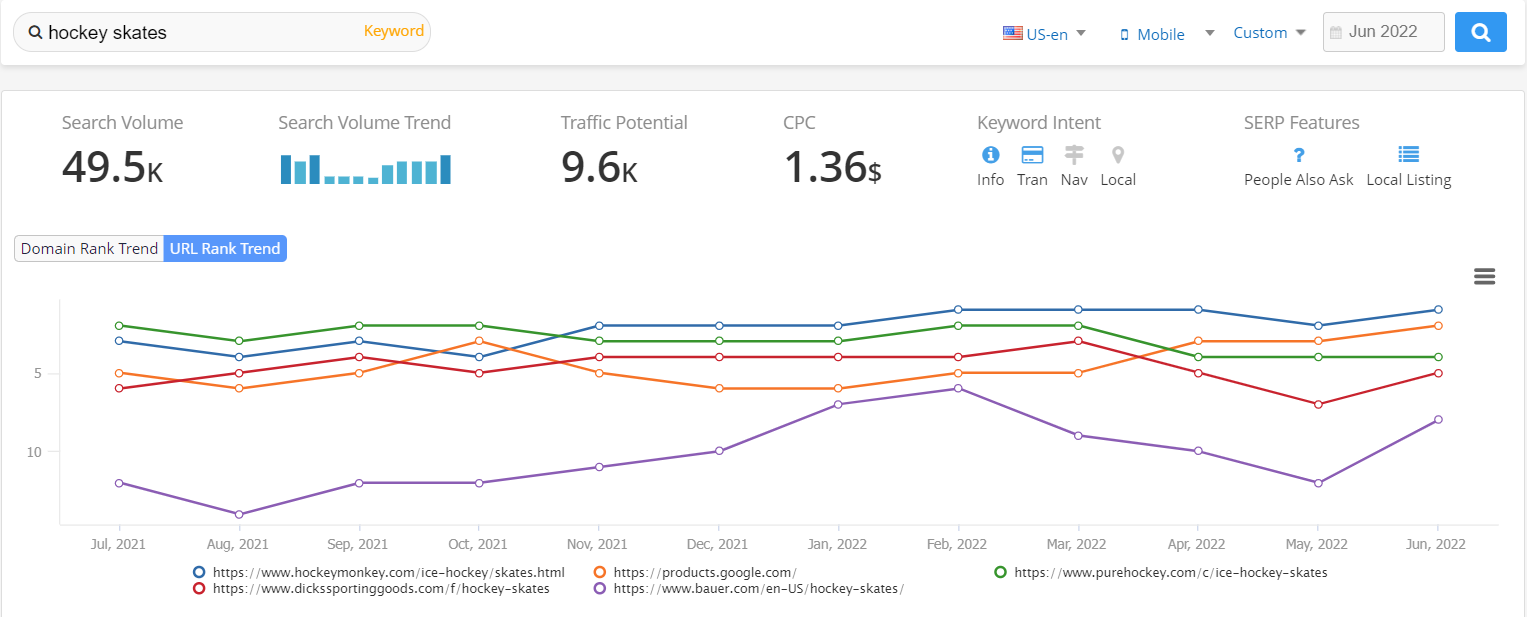
For “door hinges”, the impact of product listings is a bit more prominent, as there was a constant pattern until January 2022, when Google Product Listings (in orange) shot up from #6 to #2.
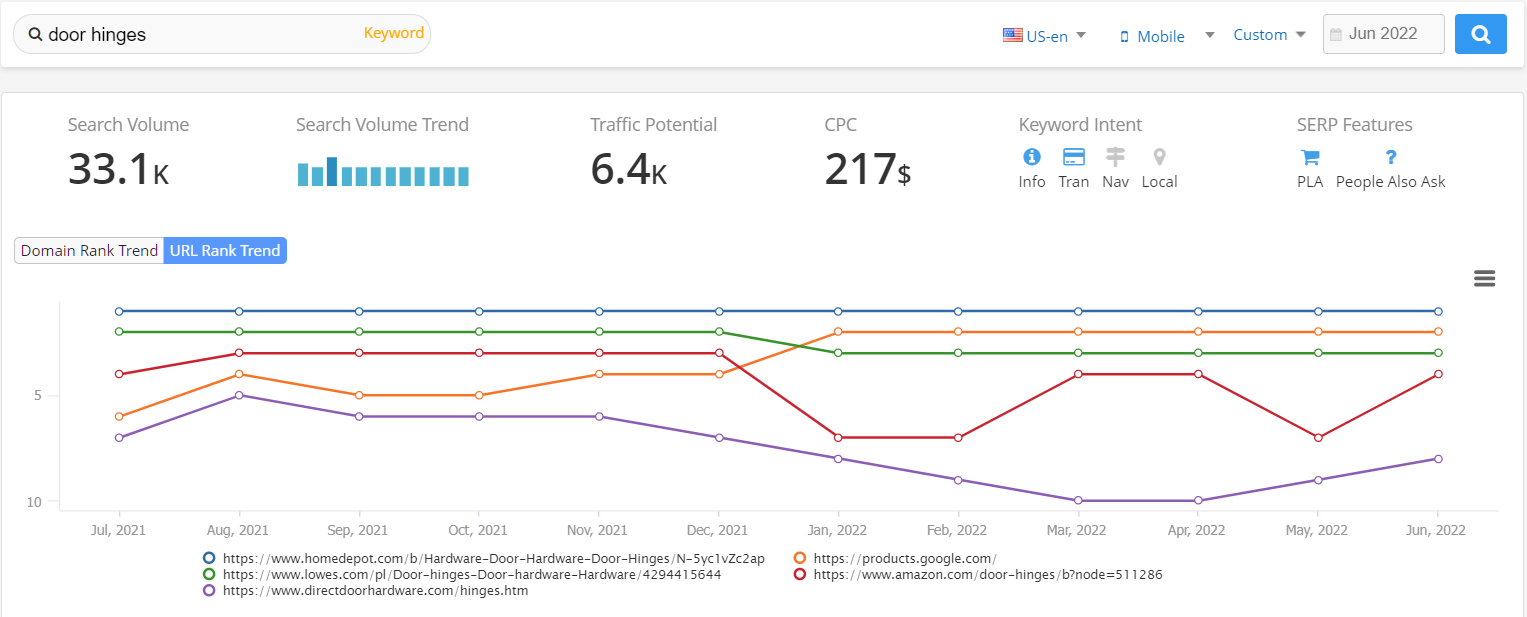
The SERP for “screen protector” is the most volatile we looked at. Google’s product listings (in green) in July 2021 were in the 10th organic spot. Throughout the year this SERP has changed monthly (and most likely daily), and as of June 2022, Google product listings are in the 4th organic spot.
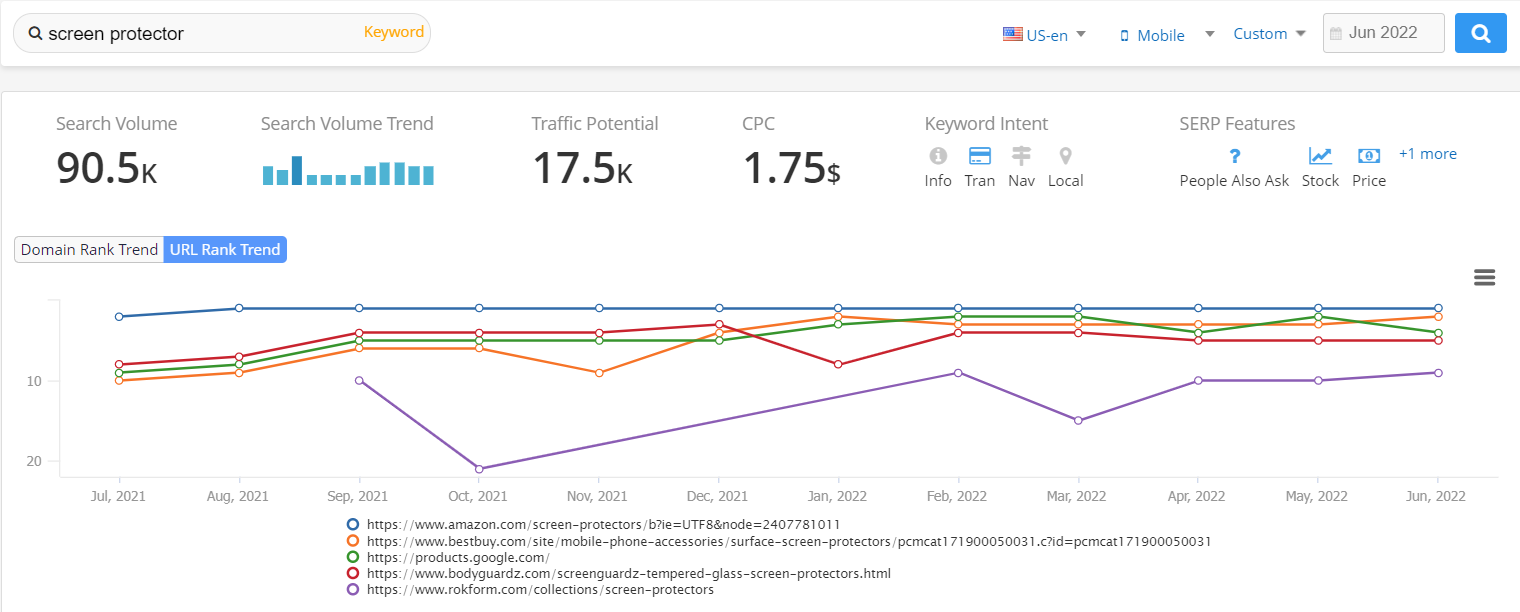
“Ground coffee” was pretty turbulent towards the latter half of 2021, but seemed to steady out a bit in 2022. Google Product Listings have been in the #1 spot of this SERP since January 2022 and is only now topped by the local map pack.
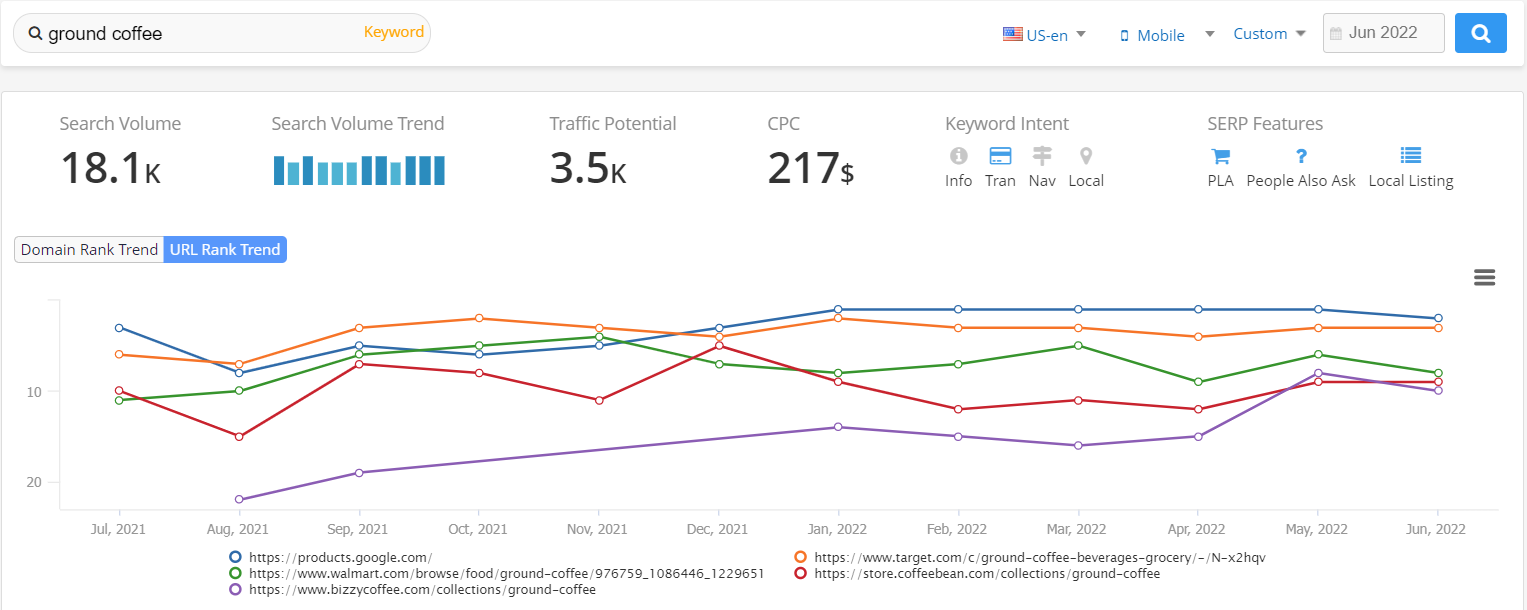
Overall, there has been a lot of movement for ranking product page URLs in the past year. The only consistent trend (as expected) is Google’s Product Listings consistently rising in rank in 2022. Of the 4 terms we looked at, there is a Google product listing or carousel in the top 4 organic spots of everyone (many times coupled with a local map pack).
Links to Informational URLs (Blogs, Product Reviews, Buying Guides)
We knew product reviews and other informational pages were a big blip on Google’s radar when they released their product review update in March 2022, and more recently their ecommerce Guideline documentation. Google was even testing out their own buying guides earlier this year, but that clearly wasn’t quite ready. Seeing SERPs getting more and more competitive with the introduction of Product Listings and Carousels, we wanted to see if more informational URLs were being dropped from the top 10 positions of these SERPs.
On the “hockey skates” SERP we see two informational URLs in the top 10 currently. “Best hockey skates” and “how to buy hockey skates” were both off of page 1 around August 2021, and slowly started trending back to the bottom of page 1 around March 2022.
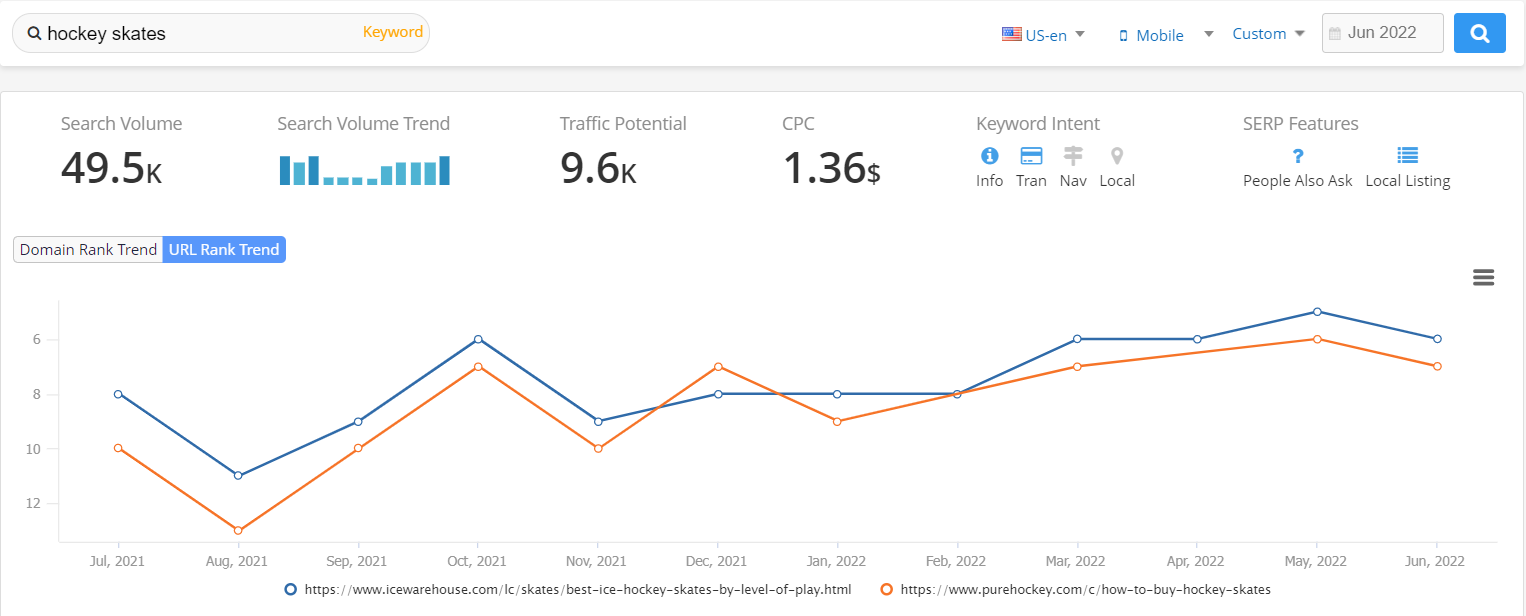
For “door hinges” there are three informational URLs currently in the top 10 organic spots. In July of last year, they were 8,9, and 10. In June of 2022, they were moved up to 6,7,8. Two of these three are titled “buying guide”.
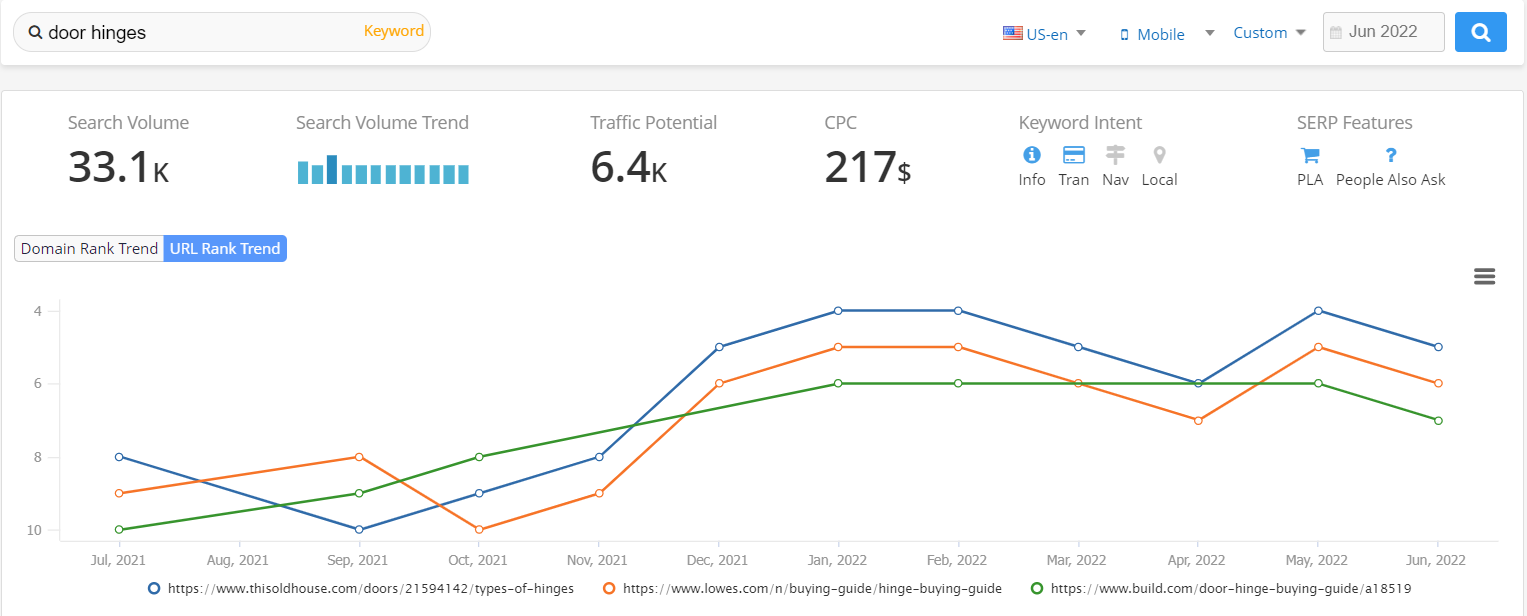
The “screen protector” SERP had the most dramatic change for informational URLs. Whereas one (pcmag.com’s “what kind of screen protector should I get”) has remained towards the top of the rankings for a year, one of the remaining two jumped from #78 to #6, and the other went from unranked to #5 in December 2022. These three are now sitting 4,5 and 6.
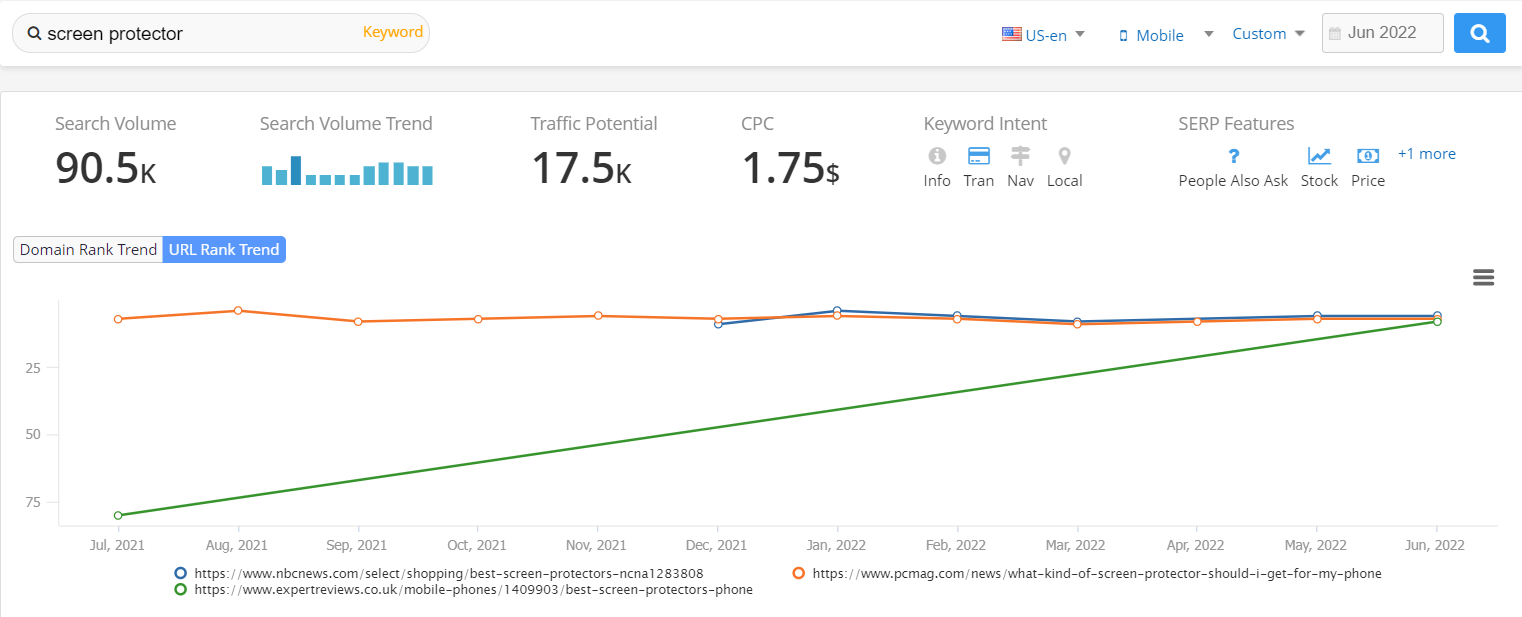
Finally, for “ground coffee” we see the most dramatic change in informational URLs of our selected search terms. Currently, when you search “ground coffee”, spots 4, 5, 6, and 7 are all informational URLs, all of the product reviews. It also makes sense that these product review pages started to rise dramatically (or start to appear on the SERP for the first time) around the product review update.
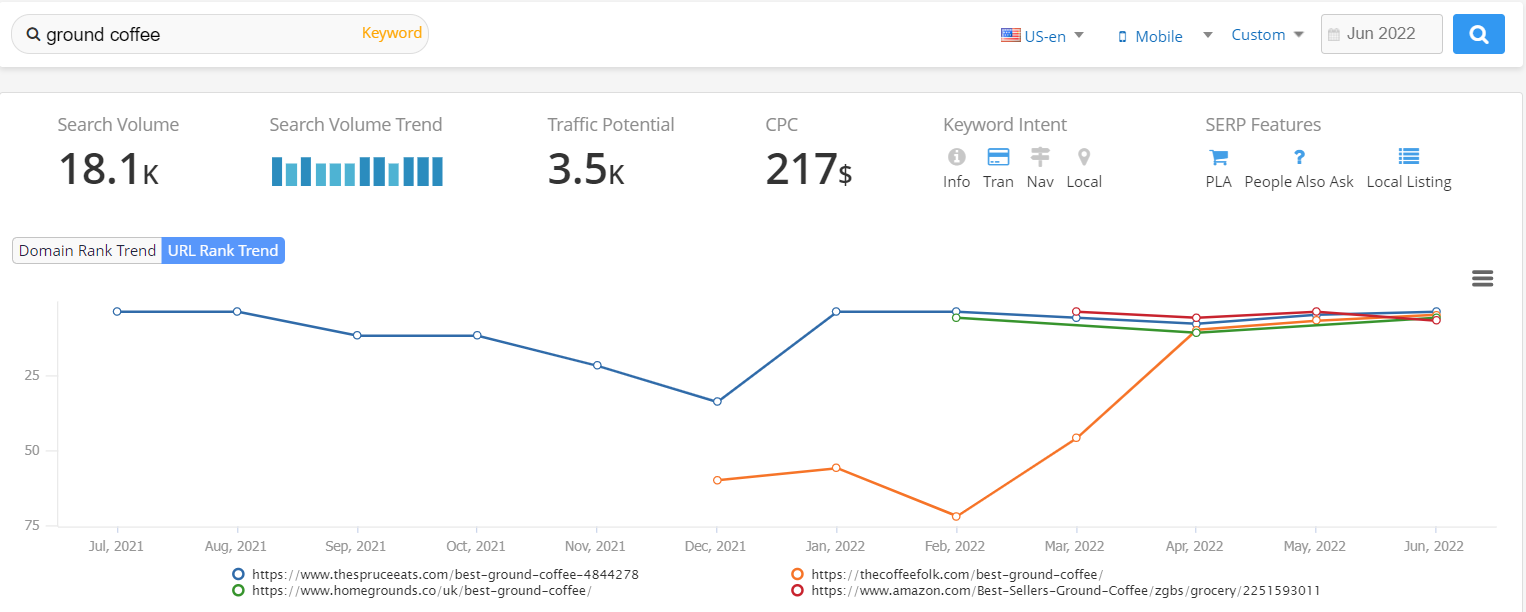
Overall, for these types of high-volume transactional intent searches, we can now expect to see around 2-4 URLs that are ranking for informational content. This has increased in the past year both in quantity ranking and rank position.
Building a Strategy
From the trend data above, we can assume that recently (as of July 2022) the top 10 organic results on ecommerce SERPs are generally set up to include
- 2 to 3 product listings + 1 Local map pack + 1 people also ask
- 4-7 “transactional” URLs
- 2-4 “informational” URLs
Businesses that are in ecommerce naturally want the most visibility possible on a given SERP. Therefore, in order to expand their chances of showing up as often and high as possible on a SERP, businesses must aim to have their industry’s very best
- Product Listings
- Product Pages
- Informational Content
In the example used above, we see that Lowes has both a product in the first product listing as well as the first-ranked organic link.

Lowes is included in both the organic product listing and the first traditional, organic “blue link”. From SERP preview for search term “pressure tanks” on 7/8/2022
First and foremost, organizations that are seeing their SERPs become dominated with product listings must establish a Google Merchant Center if they haven’t already. Then they must organize and optimize product feeds, and product listings, and synchronize data across their databases.
Second, traditional SEO has become even more important seeing as just ranking in the top 3 spots will not guarantee impressions. Businesses must focus on establishing authority and creating a fantastic buying experience. This involves traditional SEO including on-page and off-page factors. I also suggest optimizing for search terms that don’t compete with super-brands.
Lastly, we assume that Google is seeing a good response from placing informational content near the middle of page 1. Therefore businesses should follow Google’s best practices for ecommerce sites and aim to create the highest-performing informational content like product reviews, how-to’s, and buying guides. This is not only an opportunity to land potential buyers in your marketing funnel but also to establish brand awareness and authority.

